Starting CrossFit Safely and Getting Maximum Results
Editors Note: This is part 2 in a series on CrossFit by Adam Farrah, a Crossfit expert and Paleo Diet Author. You can see part 1 on CrossFit here, and you can see Adam’s series on Paleo Diet Basics here.
Foundations of CrossFit
The foundations of CrossFit are something you really should understand before you start training in it. They’re also something that you should definitely keep working at understanding throughout your training in the methodology.
As I explained in my first post, there’s a “mastery component” to CrossFit – and it’s one that isn’t always recognized or understood. In the grander scheme of things, CrossFit is about skill development and not just “working out.” Skill development is something that the best CrossFit gyms stress throughout a client’s time at the gym.
Why should we develop skill in the foundational CrossFit movements? Because they’re movements that are foundational to human movement and are deeply encoded in our genes.
When we talk about “functional movement” we’re talking about movement patters that are both universal and native to humans – and have been throughout our existence – and that are capable of moving large loads long distances quickly. There’s a great two part video series on CrossFit.com about the foundational assumptions of CrossFit that features Coach Glassman himself giving the lecture. Definitely worth a watch – especially if you like geeking out on the science and theory of training.
There’s also a great article on CrossFit.com called simply “Foundations.” This is a classic CrossFit article by Coach Glassman, CrossFit’s inventor and founder, that was written in 2002. In this article, Glassman talks about “…mastery of critical motor recruitment patterns” among many other things. This is another article that’s definitely worth a long look if you’re considering CrossFit.
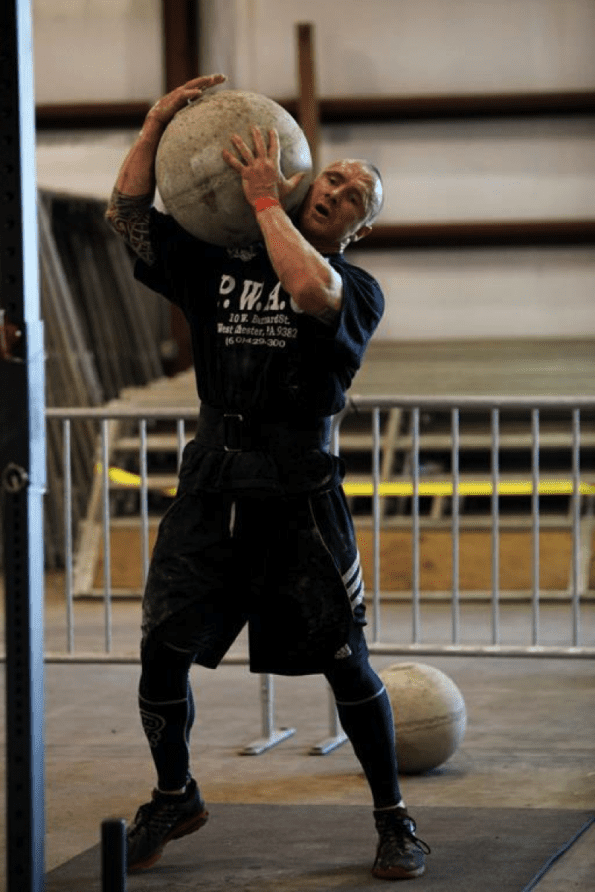

So, what ARE the CrossFit Foundations and why are they so important?
My girlfriend has this thing for Reality TV at times. A few nights ago we were watching “The Biggest Loser.” One thing that struck me about the training that was going on was that there was a lot of “working out” happening but there was very little instruction.
Why is instruction – teaching really – so important? There are a bunch of reasons. Granted, a one hour episode can’t show you everything the trainers are doing with their people, but watching “The Biggest Loser”, I couldn’t help but wonder if the trainers were TEACHING their people how to move or just making them move. It’s the classic “give them a fish vs. teach them to fish” kind of thing. If you take someone who doesn’t know how to move – due to being sedentary too long or whatever other reasons – and just make them move without teaching them proper movement patterns and WHY those patterns are important, I believe it’s a disservice to the client and a sign of a poor trainer.
But, I already know how to move…
The sad truth is, very few of us truly know how to move anymore. Our bodies have evolved over millions of years (or have been created – depending on your beliefs) to perform certain movement patterns very well, but our modern lifestyles have made our bodies “dumb” with regard to performing those movement patterns. Our bodies are not designed to sit in chairs and hunch over computers, walk in hard shoes with an elevated heel, sit in a car and drive long distances, etc. But, most of us do these things every day.
Essentially, we inadvertently train our bodies to perform foreign, unnatural movements every day of our lives.
So, the greater goal of a good training program – which CrossFit certainly is when instructed by a great coach – is to train (or retrain) the body to perform natural, native movements. There are an enormous number of benefits to moving your body in this way on a regular basis.
To bring this point home to the readers of My FiveFingers, think of a good CrossFit program as the training equivalent of hiking barefoot or in FiveFingers on uneven terrain in a natural setting. It’s native, natural movement…
Here are some of the main functional movements:
Deadlift – Pick something heavy up off the ground.
Squat – Squat or “sit” down with or without weight on your shoulders.
Clean – Accelerate an object from the ground and drive the body under it as it moves upward. The object rests on the shoulders and the trainee is standing erect with the hips open on completion of the movement.
Clean and Jerk – Bring an object from the ground to the chest/shoulders and then press it overhead with a very specific sequence of shoulder and leg/hip engagement.
Standing Press – Similar to the Jerk, above, the standing press is simply moving a weight from a position at the chest to over head using the shoulders and triceps as the prime movers without the legs.
Kettlebell Swing – This is one of my favorite exercises – and it doubles as a coaching tool for me when I train clients. Kettlebell swings – done RIGHT – are probably the best exercise ever for learning proper hip activation and a host of other fundamental movement patterns.
Turkish Get Up – Another classic that’s usually associated with Kettlebells but can be done with a dumbbell, barbell, sandbag, etc. Essentially, you lie down, move a weight to your chest, press it up and then stand up while keeping your arm or arms locked out with the weight overhead.
Pull Up – Pull yourself up to a higher surface or bar.
Walking/Running/Jogging/Sprinting – Also very functional when performed with the proper form. Our ancient ancestors did a fair amount of these activities.
Lifting of “Odd Objects” – These are things like sandbags, rocks, soft medicine balls, slosh tubes, etc. Anything that’s irregular and hard to hold or balance.
The above is by no means a complete or exhaustive list and some would likely argue that something should or shouldn’t have been included. The point is, there are a handful of fundamental movements that the human body is designed or evolved to perform efficiently and, as I’ll talk about soon, can increase the strength and fitness of the individual – not to mention overall health and wellbeing.
Moving vs. Learning to Move…
So, back to my point about “The Biggest Loser.” Even though some of the movements the trainers were having their clients do were good, functional movements, I never saw anything that would indicate that the contestants on the show were learning how to move. In other words, they weren’t receiving an education in fundamental movement patterns that they could take with them when they left the show and carry into daily life.
This is important because, when you know how to move and why you should move that way instead of another way, you’re able to evaluate different exercises and fitness programs and actually begin to teach and train yourself as you work to constantly perfect the movements over time.
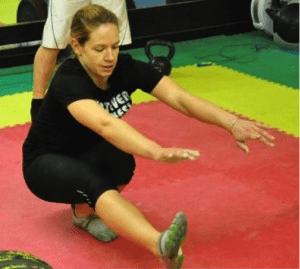

On Safety…
Perhaps the most important reason to learn the foundational functional movements properly and become highly efficient and proficient in them, is to stay safe in your training. Learning how to perform basic movements safely – before adding weight to them – is absolutely essential to staying safe and being able to train and progress long term. A large number of the injuries people tend to sustain from CrossFit training are due to poor movement patterns. They either never learned them or haven’t practiced them enough to handle the weight and/or speed they were going for.
Because CrossFit can sometimes have a bad reputation when it comes to safety – in my opinion due almost solely to less than ideal coaching – I don’t really feel I can over-emphasize the importance of learning and perfecting your ability to move before ramping up your CrossFit training to full speed. It’s also important to continue to train, practice and perfect your basic movement patterns indefinitely.
There’s a great article on these topics and the safety issue as it relates to CrossFit by a CrossFit Coach at West Point. I highly recommend that you check it out: http://journal.crossfit.com/2010/02/warning-signs.tpl
Paleo Movement?
There’s a great journal article called “Organic Fitness: Physical activity consistent with our Hunter-Gatherer Heritage” by James H. O’Keefe, MD, et al. (Incidentally, one of the other authors is Loren Cordain, author of “The Paleo Diet.”)
From the Abstract:
“Many of the pervasive health concerns in modern society are the result of diet and lifestyle choices that are at odds with the evolutionary milieu for which we remain genetically adapted. This systematic displacement from a very physically active lifestyle in a natural outdoor environment to a sedentary indoor lifestyle may be at the root of many chronic diseases that are endemic in our culture. A proposed solution is to simulate indigenous human activity patterns in such a way that is possible and practical for individuals to achieve. Suggestions for exercise mode, duration, intensity, and frequency are outlined, with a focus on realigning our daily physical activities with the archetype that is encoded within our genome.”
So, without getting into a big academic discussion and dissertation defense, what I’m getting at here is that our lifestyles and habitual activity and movement patterns are not what are best for our bodies. A properly designed and instructed CrossFit program can offset this by teaching and reinforcing these movement patterns over a period of time and training them in a way that increases fitness.
So, regarding “The Biggest Loser,” I think trainers (of ANY methodology) do their clients a disservice when they don’t lay down a foundation of natural, functional movement with their trainees, drill it until it’s second nature and explain why the movements are important and what points are important about them. This is one reason that people become dependent on having a trainer to work out and on having a gym to work out in – effective training requires neither when you understand how to move.
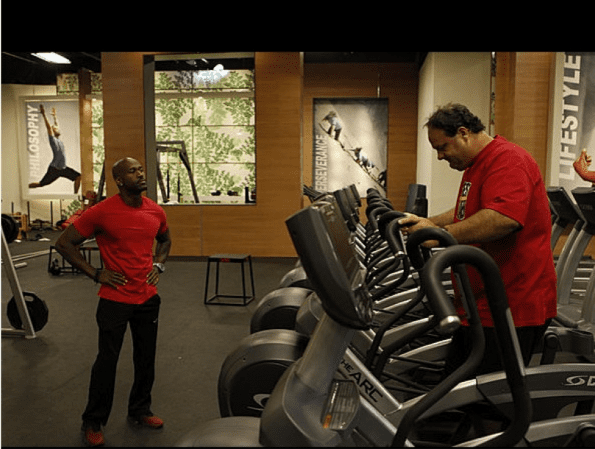

Working Out vs. Learning To Move…
Anyone can work out. And just about anyone can work you out. The “trainer” down at the corner gym making $10 an hour (of course, you’re going to pay the gym $80 an hour for her time…) can give you a workout that will make you sweat and have you feeling like you really did something. But did you?
CrossFit is no different. If you read virtually anything that Greg Glassman wrote in the early days there’s regular mention of functional movement and the importance of them in a strength and health building program.
The issue is, of course, that we’ve lost a lot of our innate connection to functional, natural and primal movements. Just as our taste buds have lost much of their ability to guide us toward healthy and nutritious food in many instances, our bodies have lost a lot of their natural ability to move in the most efficient ways.
So, a lot of the beauty and value of a CrossFit program – with a good coach – is that your body is relearning and reconnecting with primitive movement patterns that are natural to it and very healthy for it.
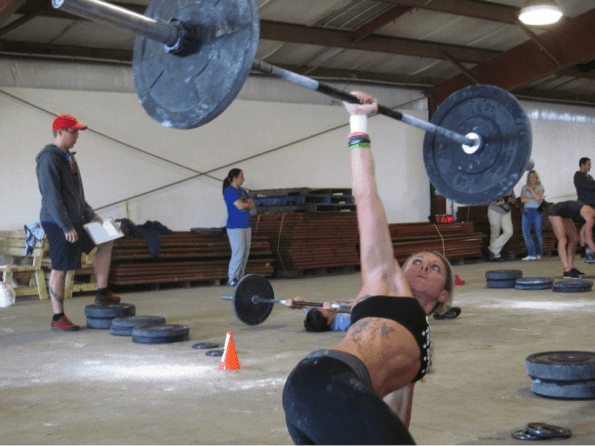

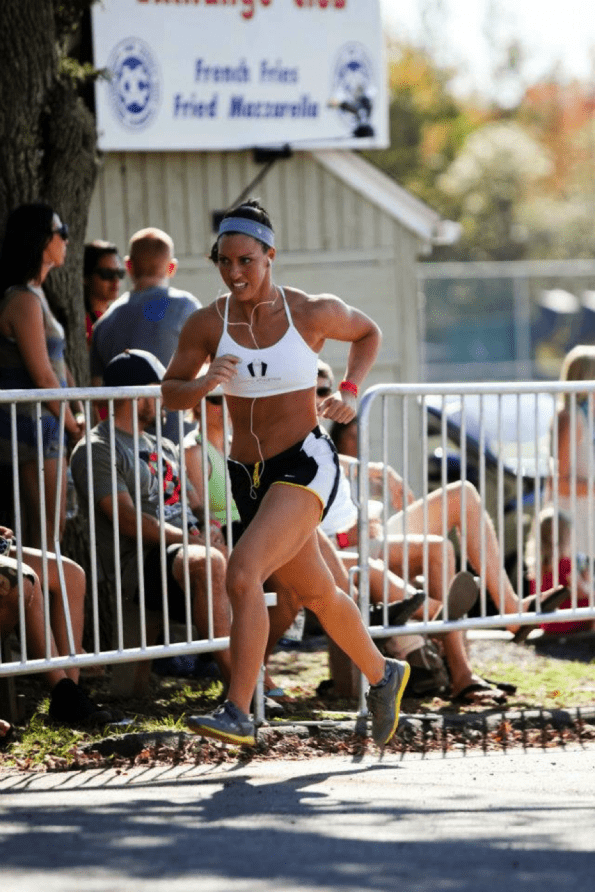

Learning (or relearning) to move is one of the great advantages of a program like CrossFit – when it’s implemented and coached properly.
Learning more – CrossFit.com
CrossFit.com, or “The Main Site”, is a fantastic resource for learning more about CrossFit. You could lose yourself and all track of time for at least a year on that site if you watch all the videos and read the threads in the discussion forums.
Add in CrossFIt Journal and all the articles in that resource and you can add at least another year to your “All You can eat CrossFit information buffet.” (BTW, a subscription to CFJ is about $25 a year and has to be one of the greatest deals going in the training information world.)
As a matter of fact, in the early days of CrossFit, many people got started simply by doing the workout posted on the main site every day and interacting with others in the comments and in the forums. Now it’s pretty easy to find a CrossFit gym near you to train. In the early years – pre 2007 – 2008 maybe – it wasn’t as easy.
If CrossFit is something you really want to get into – and the benefits can be truly outstanding – you need to do two very important things – find great coaches and commit to lifelong learning. These two things will make sure you start off safely and have a great time training and advancing as a CrossFitter.
Questions about CrossFit? Let us know in the comments!

Nice article Adam. Although not CrossFit based, there’s a great little experiment currently going on over at NaturalRunningStore 100 Up, 30 Day Challenge (https://www.facebook.com/?sk=h_chr#!/groups/274754402564073/) regarding running technique. My favourite quote so far: “Speed is a natural progression of a solid foundation in technique, it will come in due time.” though I think it could be universally applied if ‘Speed’ is replaced with ‘Performance’. Taking the time to master the fundamentals will always pay off in the long term.
Thanks, Brendan!
Yeah, “Speed is a natural progression of a solid foundation in technique, it will come in due time.” is right, freakin on!
Thanks for the great comment!
Adam
I have to totally disagree with you about the safety of crossfit. There is no degree of experience that will ever make performing Olympic lifts past to and past the point of exhaustion safe. Its the weight lifting equivalent of drinking and driving. Olympic lifts are fundamentally too dangerous to be used as a form of conditioning. And that doesn’t matter if you are a beginner or an Olympian. You will find that the biggest objectors to the high volume use of Olympic lifts as a form of conditioning are in fact Olympian caliber weight lifters and trainers not beginners.
Many of the crossfit programs I have seen due to their high volume of Olympic lifts a fundamentally unsafe regardless of experience. Actually the more experienced you are and the more weight you can move the more dangerous it is.
I disagree, Tom, but I understand where you’re coming from.
You’re definitely entitled to your opinion.
Adam
I would disagree with Tom as well – saying that something is unsafe on the basis of watching some videos on youtube without ever actually experiencing it is a bit pre-judgemental to say the least. It also speaks to how little they actually know about the CrossFit training methodologies – I would make the same argument for any olympic weightlifter or coach who says the same…they clearly don’t understand what CrossFit is. Why then are people like Kendrick Farris, Chad Vaughn, the Burgener family (Casey, Natalie, Sage etc..) involved in the CrossFit community if its so dangerous? Yes there are very reputable olympic lifters such as Gregg Everett who used to be involved with CrossFit and have since parted ways but that has more to do with ‘political’ differences than feeling that its dangerous. If scaled appropriately (which any good gym & reputable coach should do) then there is no reason that olympic lifts can’t be incorporated into metabolic conditioning workouts in a safe & effective manner. I guess anything can be considered ‘dangerous’ when not done properly – running with excessive heel strike, deadlifting with a rounded back, squatting on your toes, bench pressing without a spotter, trying to do a backflip without mats, driving, flying, ohh and being obese is pretty dangerous for your general health as well. When olympic lifts are done in CrossFit workouts they tend to only be a part of the workout – having a set of trained eyes watching you helps ensure that things are being done in a safe manner. Firefighting, Police and the Armed Forces are dangerous jobs – maybe we as a society we shouldn’t do those either.
Great points, Dan! Thanks for adding them!
Adam
Spot on Dan!
I guess Tom doesn’t understand CrossFit’s goals or methods. CrossFit’s ultimate goal is to develop work capacity across broad time and modal domains. We do this by moving large loads, long distances, quickly, in a variety of different ways. Since life often demands it, CrossFitters train explosive movement while both fresh and fatigued, and with every possible load and rep scheme.
NoExcuses Crossfit
Im am going to have to take Toms side on this. I am currently servining in the USCG deployable operations group, and our unit has been visiting a local crossfit gym two days week. I hold a few of Alabama’s dead lifting titles as a highschooler, so I have plenty of experience with all crossfit movements. After growing up using these weight lifting movements and seeing the injuries my unit has recived since using crossfit as a method of fittness, im statrting to realize its a fitness fad. The stats for crossfit injuries are building by the day. The military is starting to encourgae its members not to use it as a fitness tool. You can talk to any olympic weight lifter and 99.9% of them sustain injuries that will stay with them because of these lifts.